Abstract
An injection of influenza vaccine was offered to approximately 60 000 Postal and Telecommunications staff at the beginning of five successive winters. The sickness absence of this group, which included those who accepted the offer of vaccine as well as those who did not, was compared throughout the winter with that of a similar number of employees who were not offered vaccine. The two groups, `vaccinated' and control, comprised the staff of nearly 400 Post Office units scattered throughout Great Britain, the units of the two groups being matched as far as practicable for numbers employed, type of work, region and type of location.
The proportion who accepted vaccine fell from 42% in the first year (when only 26 000 Telecommunications employees were offered vaccine) to 35% in the second year, and 25% by the fifth year.
With the exception of Telecommunications employees in 1972-73, the sickness absence rate of the group offered vaccine was less than that of the group not offered vaccine, and the difference was evident during the winter observation periods both when influenza was prevalent and when it was not. In the last four years of the study the average difference in sickness absence between the `vaccinated' and control groups was 1·26 days per 100 employees per week during and 1·12 days outside the influenza periods. Moreover, the difference during the influenza periods was greater than could be expected from the acceptance rate of vaccine and the estimated attack rate of influenza. The apparent reduction in sickness absence of the group offered vaccine in comparison with the group not offered vaccine represented an appreciable saving in cost.
It is suggested than an annual influenza vaccination campaign in industry may produce financial benefit, but that only a proportion of the benefit is due to an improvement in health.
Full text
PDF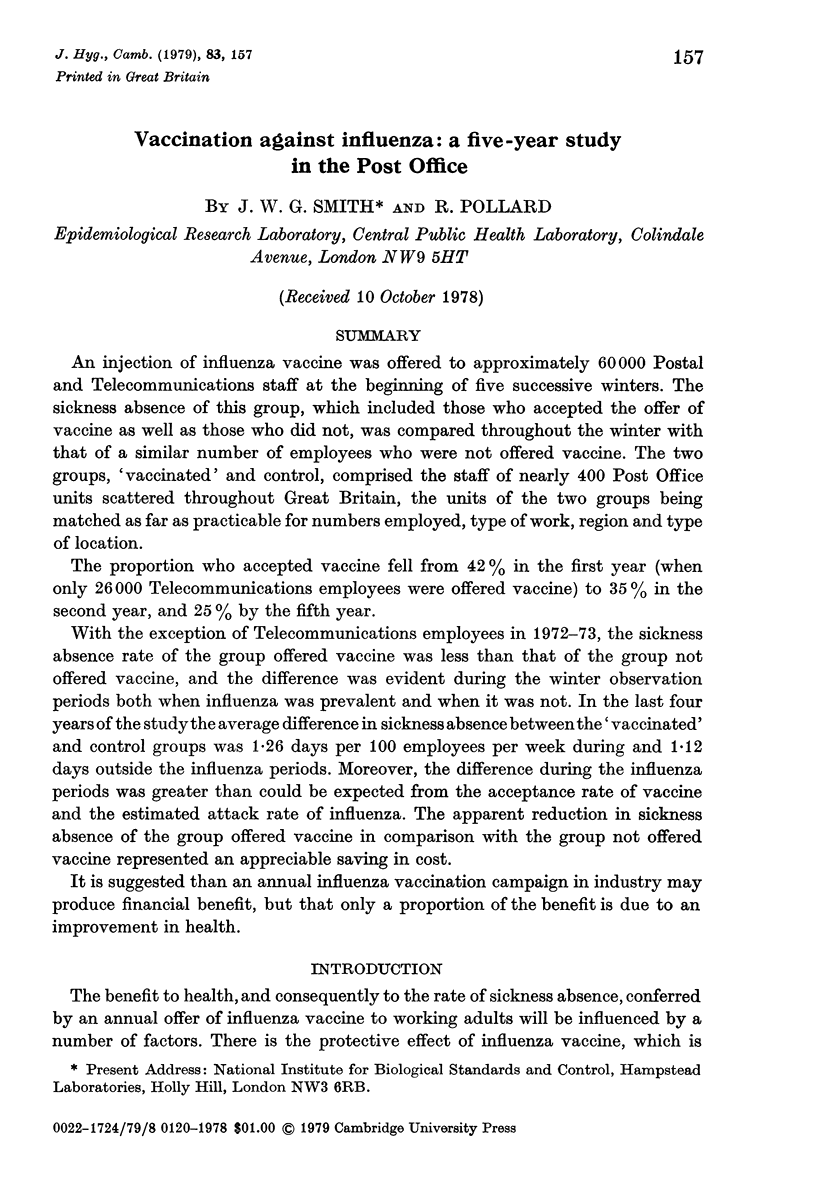
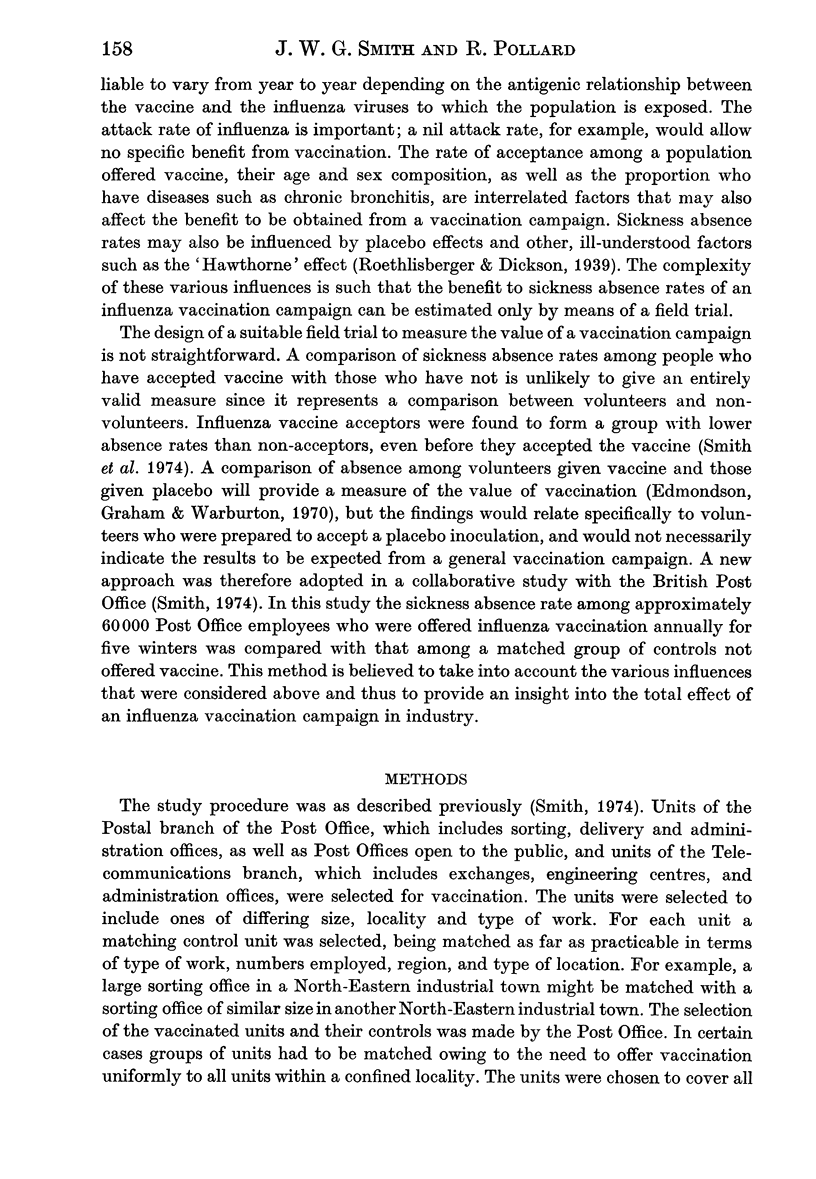
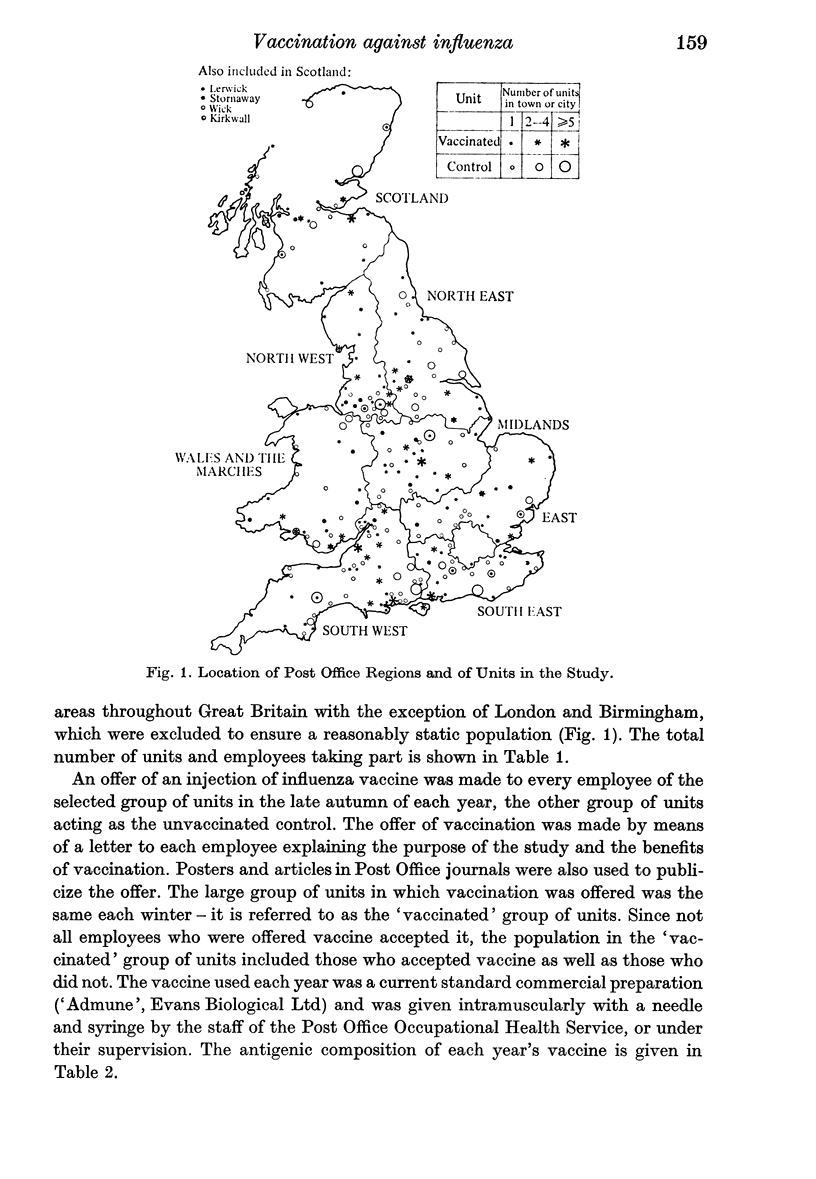
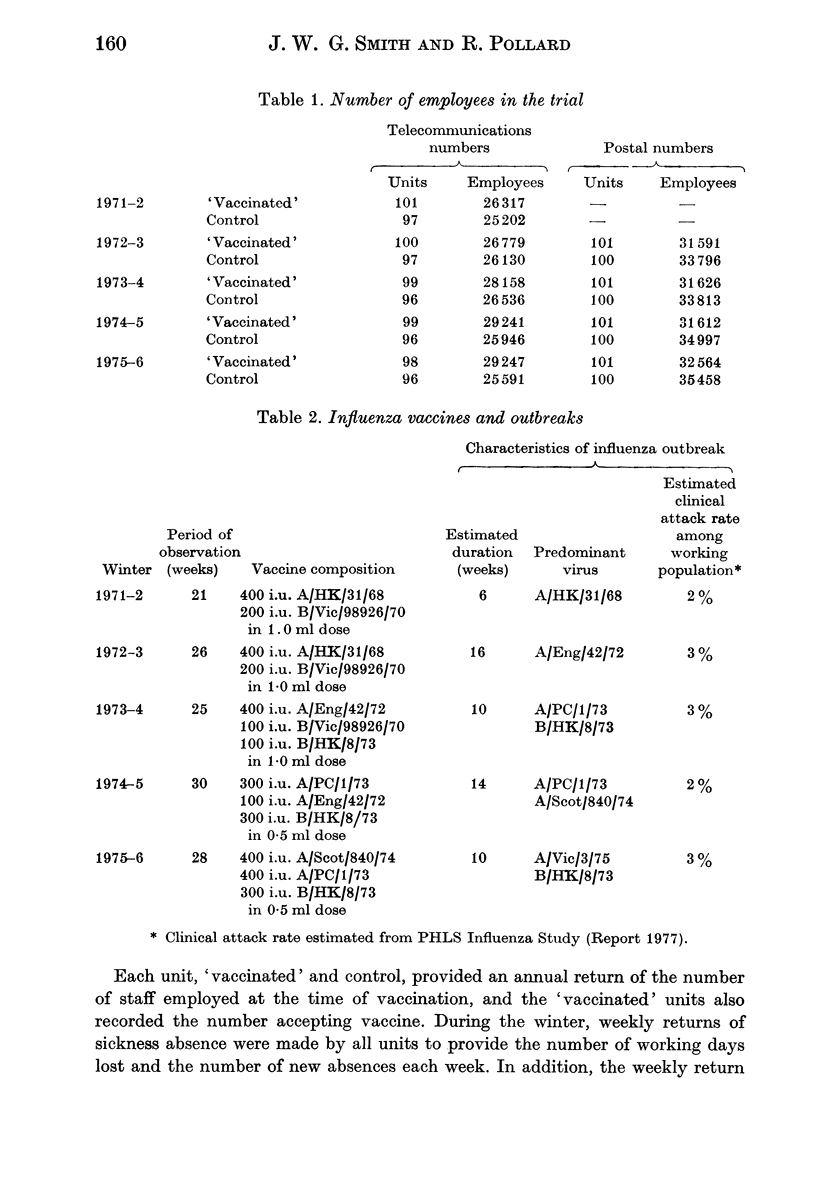
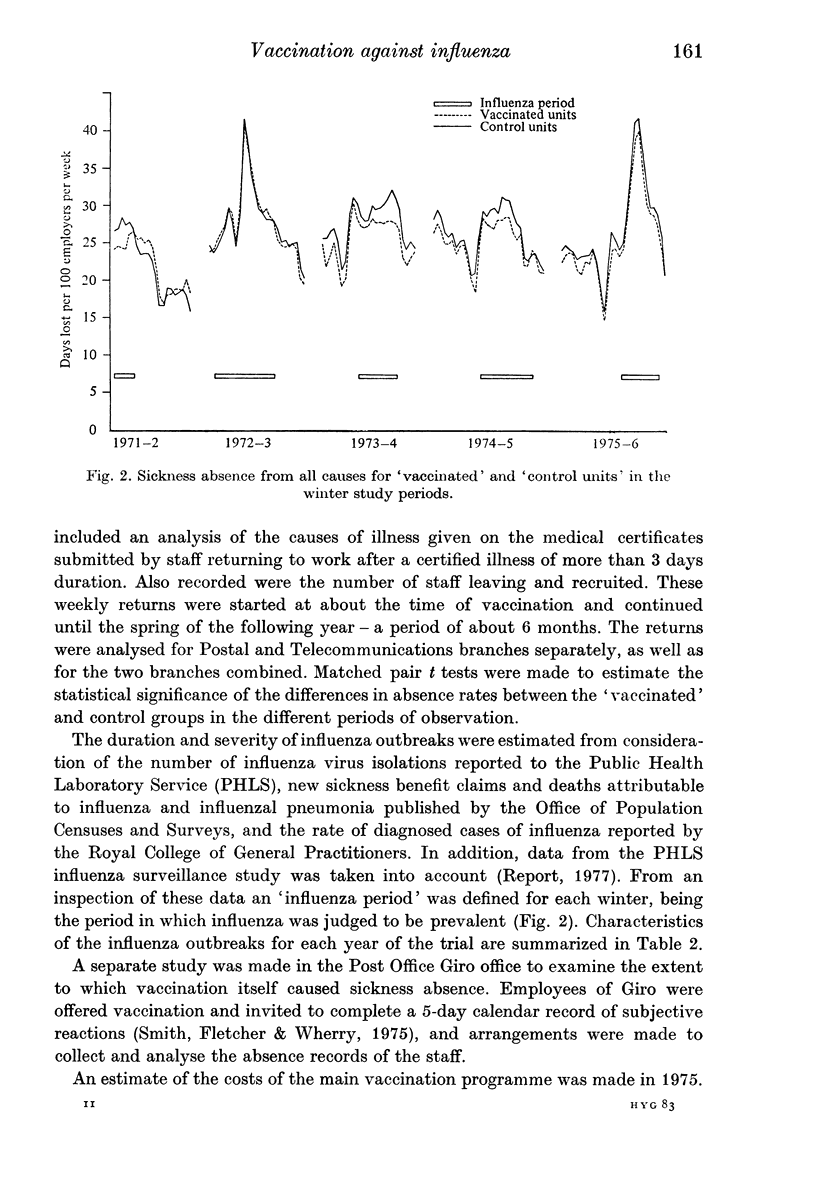
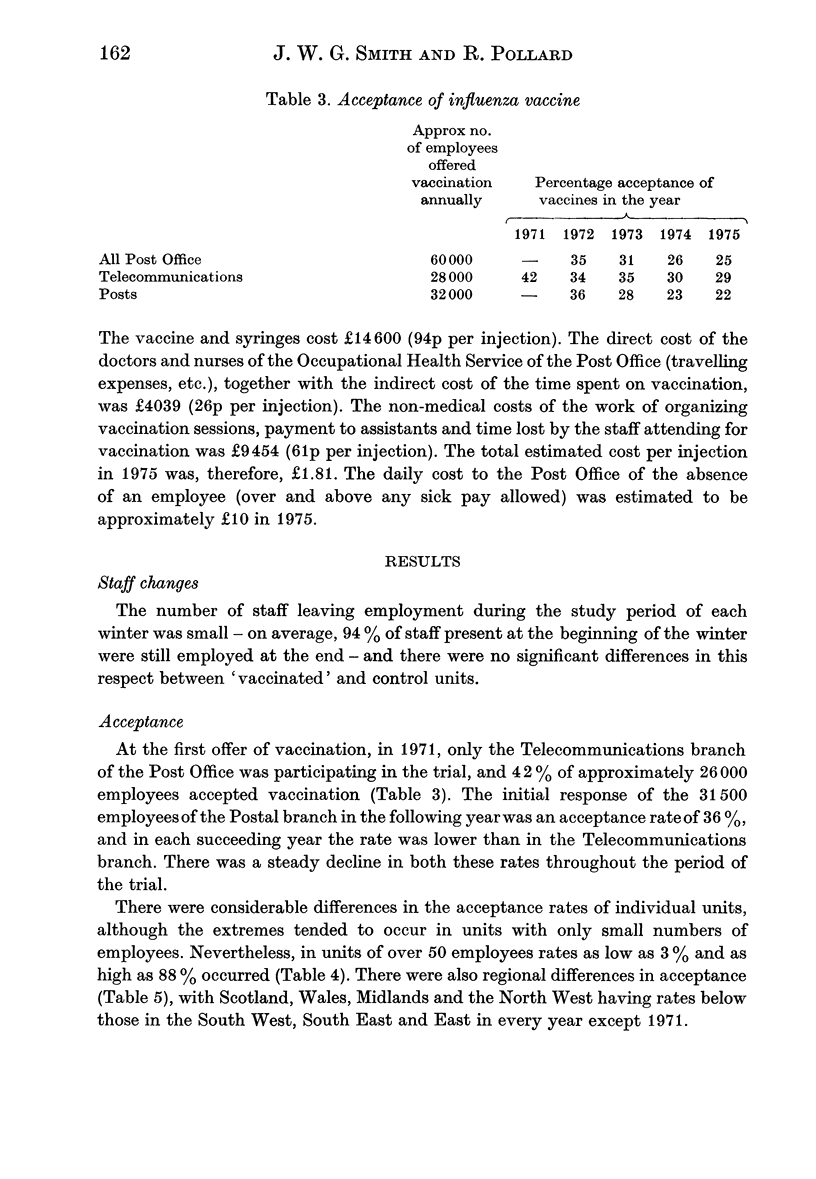
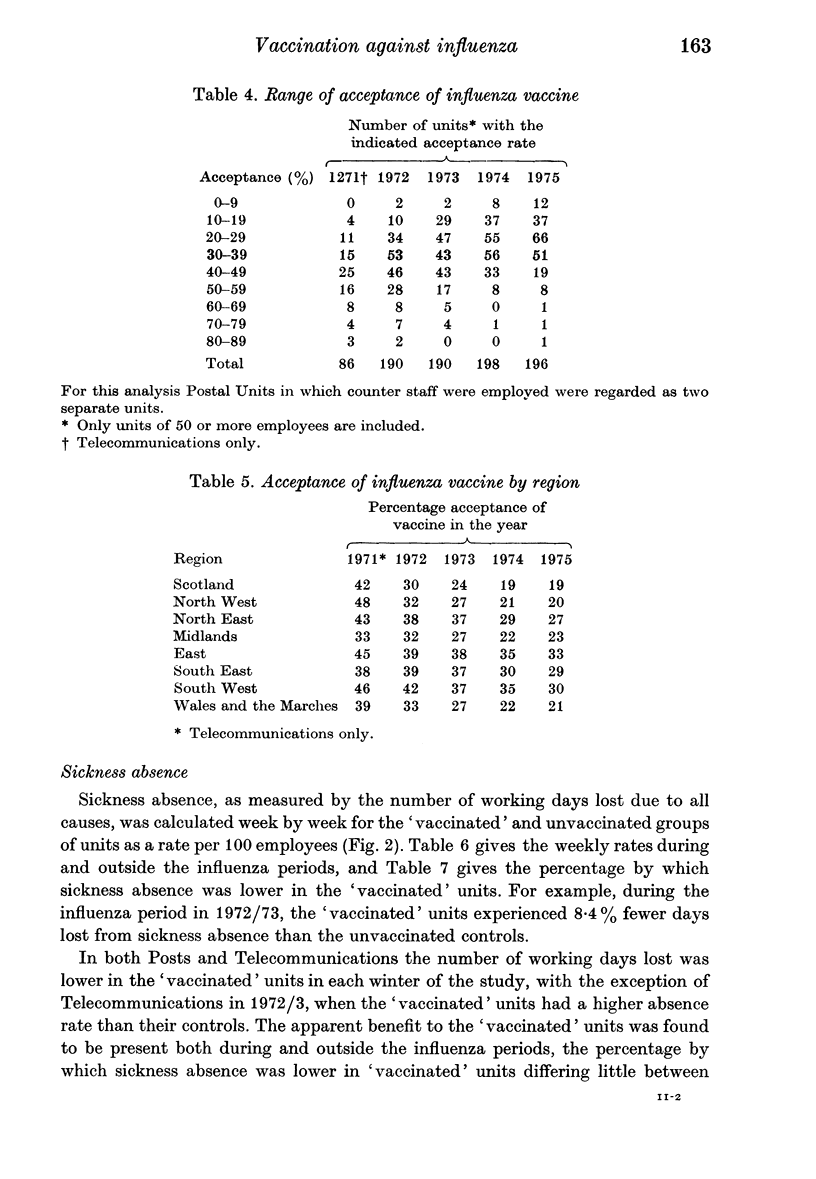
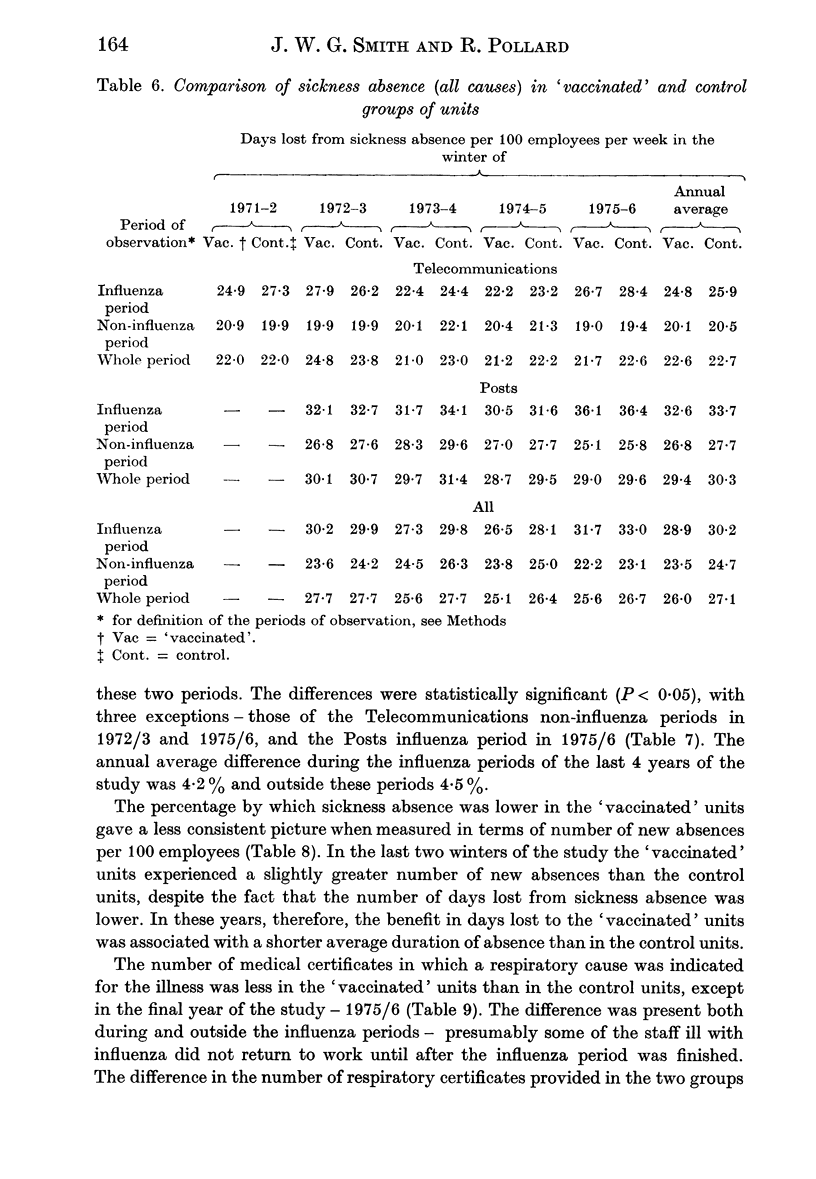
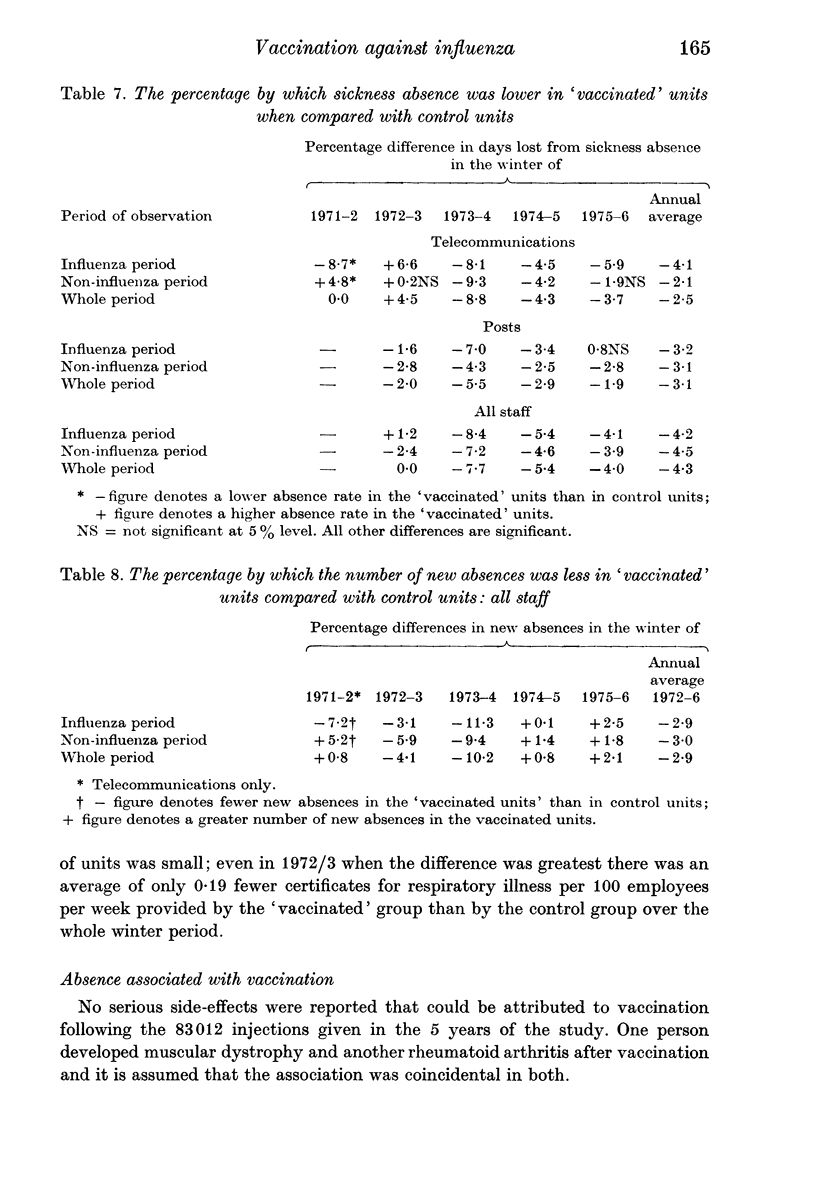
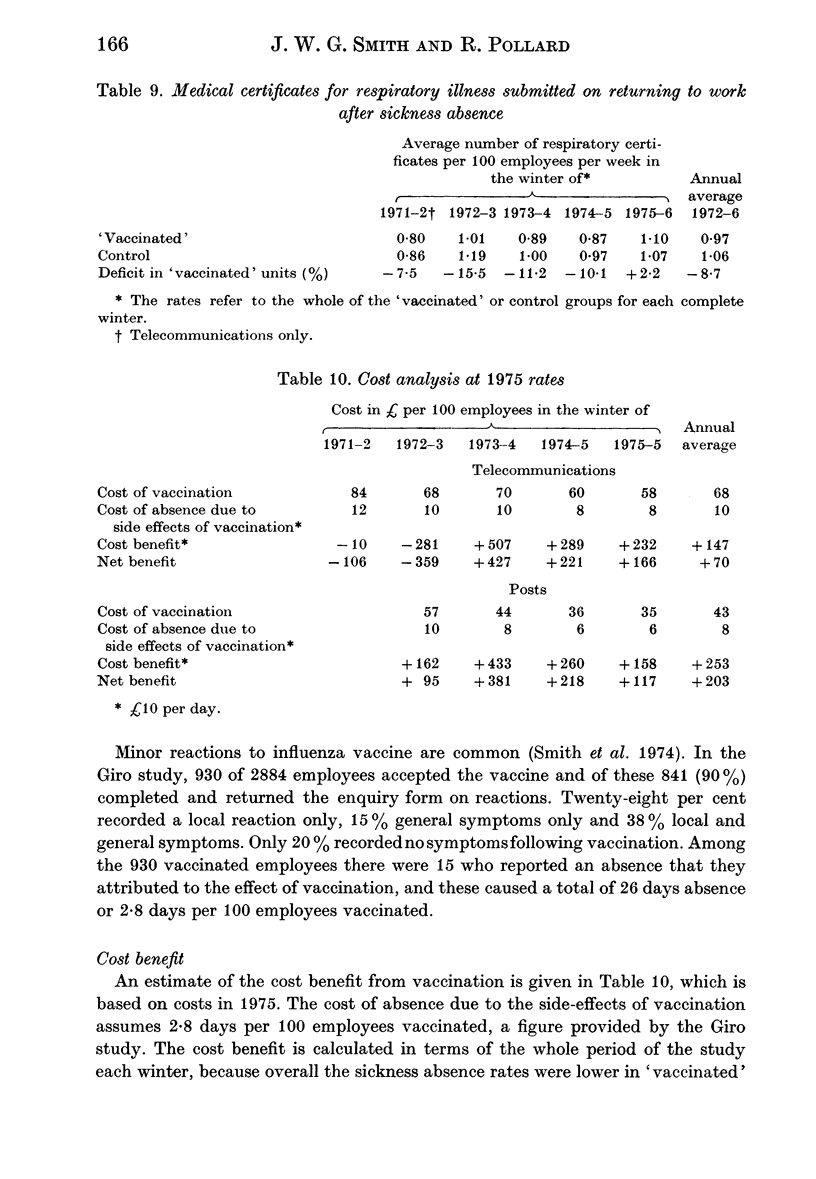
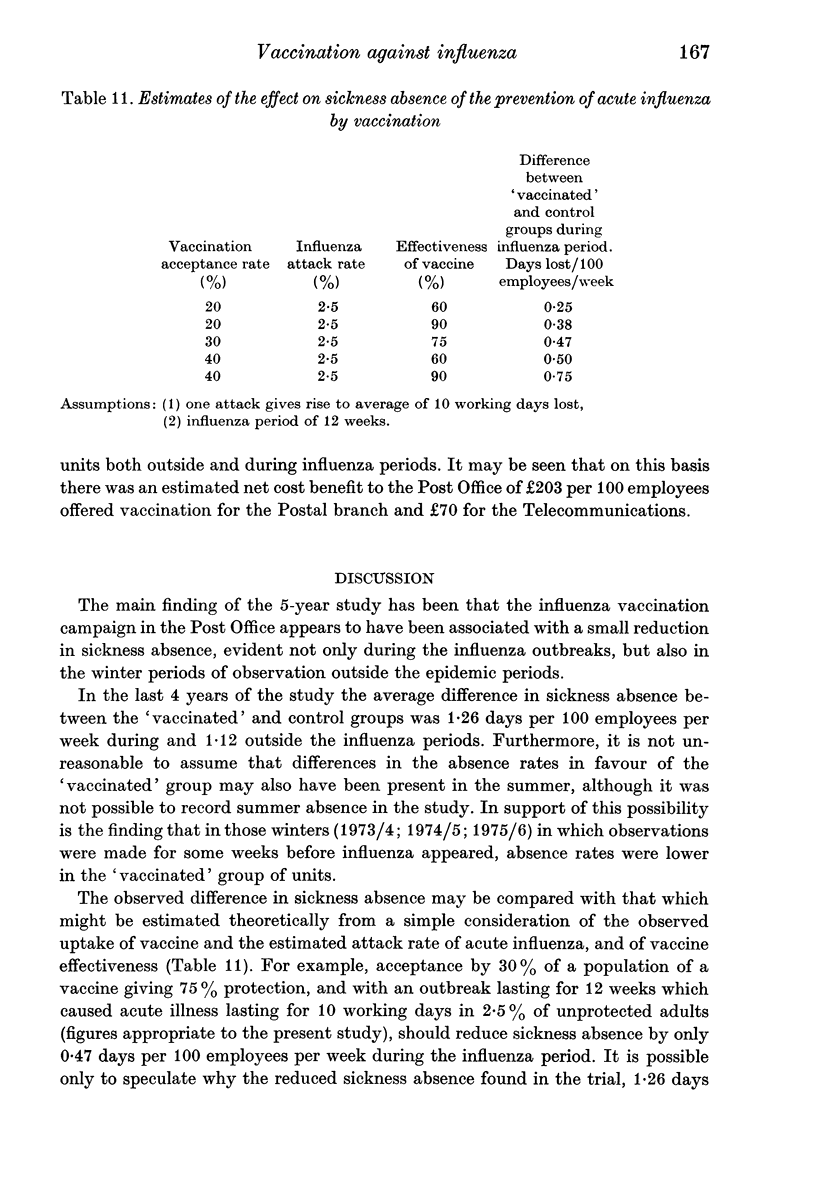
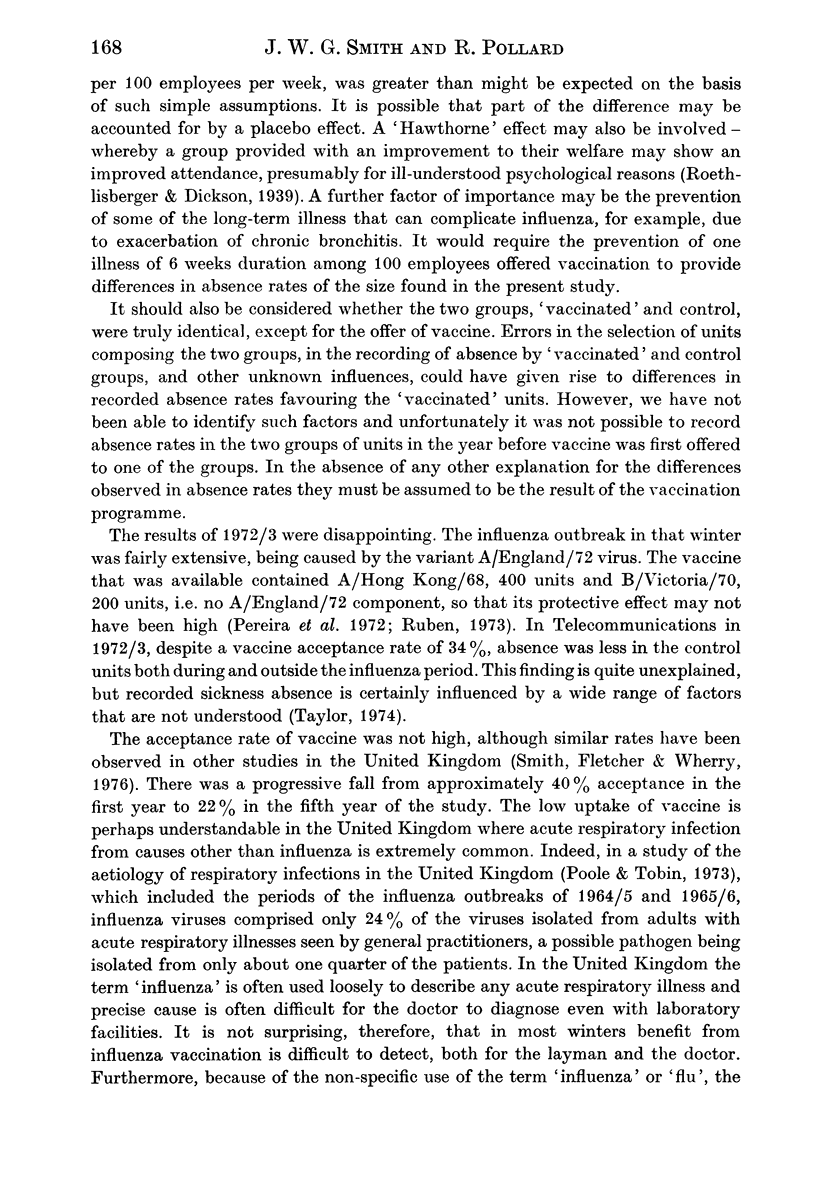
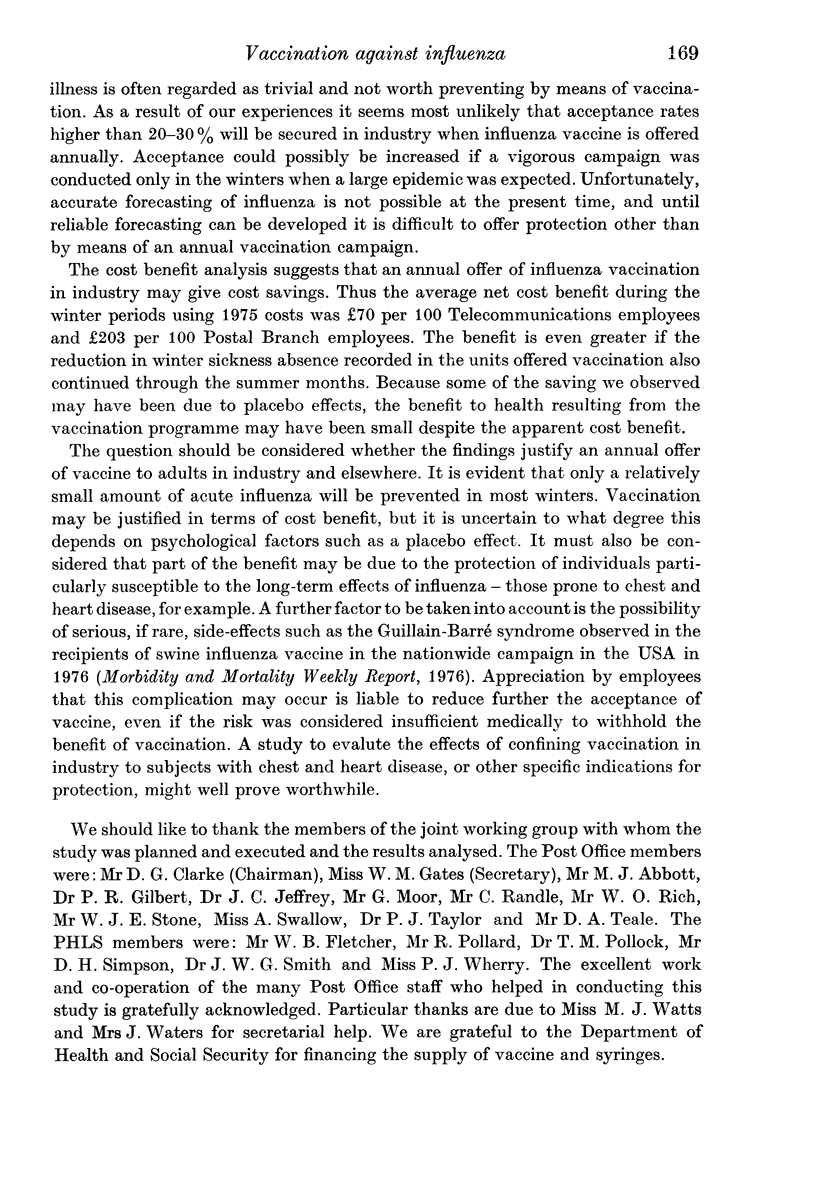
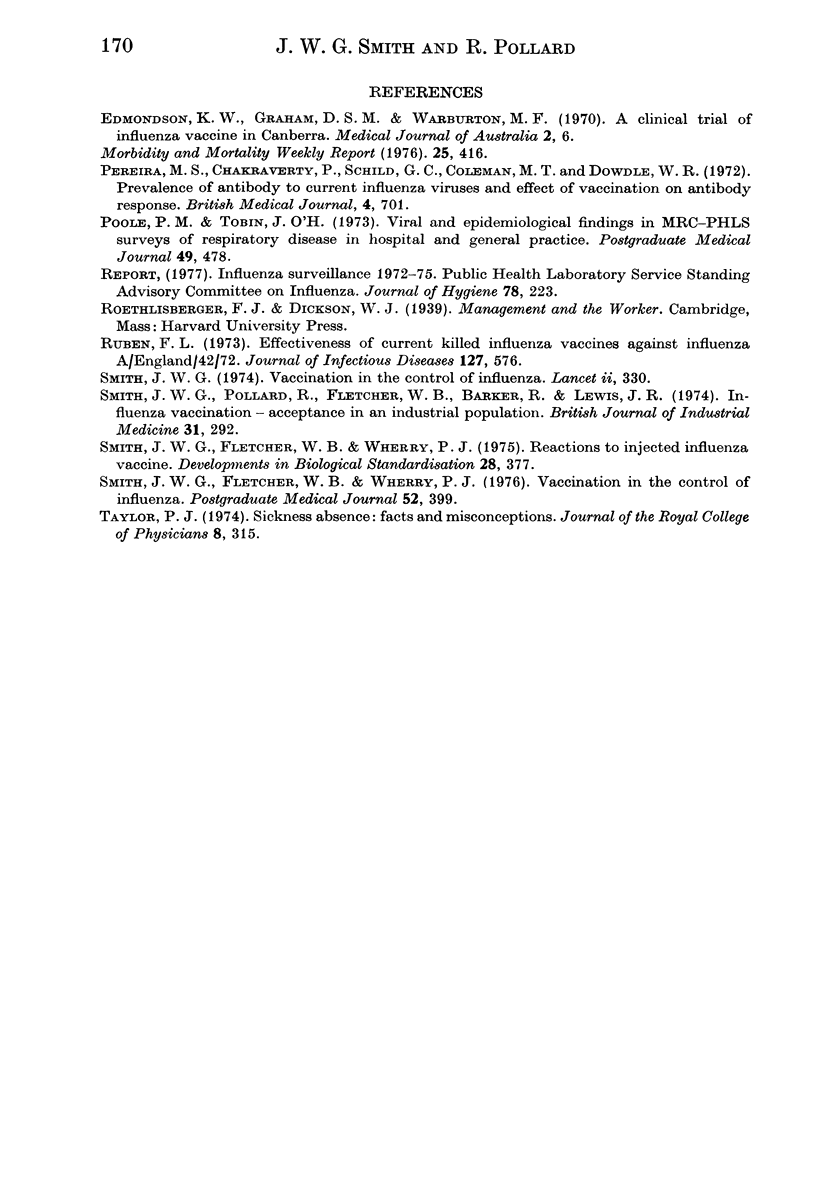
Selected References
These references are in PubMed. This may not be the complete list of references from this article.
- Edmondson K. W., Graham D. S., Warburton M. F. A clinical trial of influenza vaccine in Canberra. Med J Aust. 1970 Jul 4;2(1):6–13. doi: 10.5694/j.1326-5377.1970.tb84667.x. [DOI] [PubMed] [Google Scholar]
- Pereira M. S., Chakraverty P., Schild G. C., Coleman M. T., Dowdle W. R. Prevalence of antibody to current influenza viruses and effect of vaccination on antibody response. Br Med J. 1972 Dec 23;4(5842):701–703. doi: 10.1136/bmj.4.5842.701. [DOI] [PMC free article] [PubMed] [Google Scholar]
- Ruben F. L. Effectiveness of current killed influenza vaccines against influenza A-England-42-72. J Infect Dis. 1973 May;127(5):576–577. doi: 10.1093/infdis/127.5.576. [DOI] [PubMed] [Google Scholar]
- Smith J. W., Fletcher W. B., Wherry P. J. Reactions to injected influenza vaccine. Dev Biol Stand. 1975;28:377–388. [PubMed] [Google Scholar]
- Smith J. W., Fletcher W. B., Wherry P. J. Vaccination in the control of influenza. Postgrad Med J. 1976 Jun;52(608):399–404. doi: 10.1136/pgmj.52.608.399. [DOI] [PMC free article] [PubMed] [Google Scholar]
- Smith J. W., Pollard R., Fletcher W. B., Barker R., Lewis J. R. Influenza vaccination--acceptance in an industrial population. Br J Ind Med. 1974 Oct;31(4):292–297. doi: 10.1136/oem.31.4.292. [DOI] [PMC free article] [PubMed] [Google Scholar]
- Smith J. W. Vaccination in the control of influenza. Interim report to the Director of the Public Health Laboratory Service on a Collaborative Study with the Post Office. Lancet. 1974 Aug 10;2(7876):330–333. doi: 10.1016/s0140-6736(74)91704-8. [DOI] [PubMed] [Google Scholar]
- Taylor P. Sickness absence: facts and misconceptions. J R Coll Physicians Lond. 1974 Jul;8(4):315–333. [PMC free article] [PubMed] [Google Scholar]


